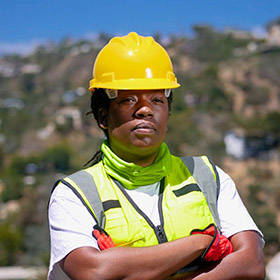About Us
About Us
We Are Leading Private Utility Locator Company In The Pacific
A Subsurface Utility Engineer (SUE) is a specialized professional or firm that focuses on identifying, analyzing, and managing underground utilities to support construction and infrastructure projects. SUE services are critical for minimizing risks, reducing project delays, and ensuring safety during excavation and construction.
Key Responsibilities of a Subsurface Utility Engineer
Utility Identification and Mapping Locates underground utilities such as gas lines, water pipes, electrical conduits, and telecommunications cables using advanced techniques like Ground Penetrating Radar (GPR) and electromagnetic locating.
Creates accurate utility maps to aid in project design and execution.
Utility Quality Levels QL-D: Collects existing utility records for preliminary planning.
QL-C: Combines record data with visible utility surveys.
QL-B: Uses geophysical techniques to locate and map utilities with higher accuracy.
QL-A: Involves vacuum excavation or potholing for precise utility location and depth verification.
Conflict Analysis Evaluates potential conflicts between planned infrastructure and existing utilities.
Recommends design changes to avoid utility interference.
Risk Mitigation Provides data to minimize the risk of damaging utilities during excavation.
Ensures compliance with local, state, and federal regulations.
Support During Construction Assists construction teams in managing and protecting utilities throughout the project lifecycle.
Utility Relocation Coordination Facilitates relocation planning for utilities that conflict with new construction.
Importance of Subsurface Utility Engineering
Safety: Prevents accidents caused by hitting underground utilities.
Cost Savings: Reduces the risk of unexpected utility-related delays and damages.
Efficiency: Enhances project planning and execution by providing detailed subsurface data.
Compliance: Ensures adherence to local and industry standards for utility management.
Subsurface Utility Engineering is often required in urban areas where the density of underground infrastructure is high and where precision is paramount.
Schedule or Quote Phone: +1-808-284-2538
Underground Analysis
Underground pipe and utility analysis is crucial for maintaining safety, ensuring efficient project planning, and preventing costly damages. This specialized service provides accurate data on the condition, location, and functionality of underground utilities and pipes.
3D Building Scans
3D laser scanning is a cutting-edge technology used for precise and efficient data collection in construction, architecture, and infrastructure projects. It captures detailed measurements and creates high-resolution 3D models of buildings, structures, and their surroundings.
iCloud Project Storage
iCloud can serve as an effective project storage solution for the construction industry, offering tools to enhance collaboration, data accessibility, and workflow efficiency
$1+
2024 (Million)
520
Clients
1592
Successfully Project
50+
Year of experience
The Team
Our Experts

Marcus
Operations Manager

Jenny
Engineer Assistant

Doug
Chief Engineer

Alisa
Administration
We Follow Best Practices
Registered private utility locating company with 811 One Call Service
